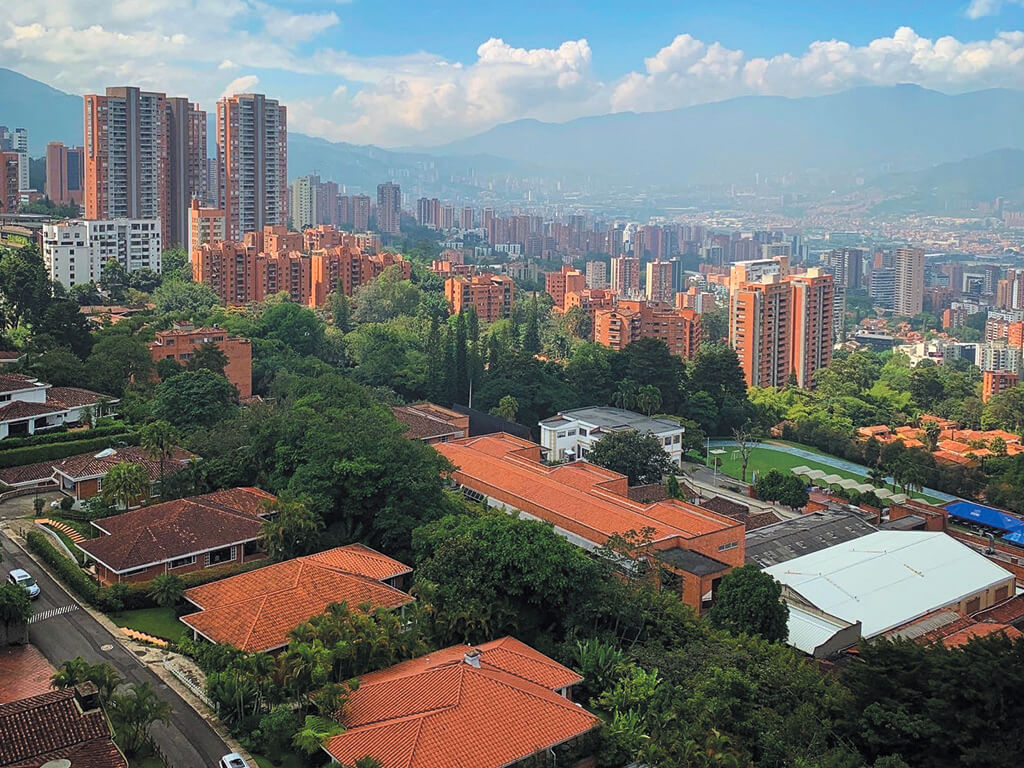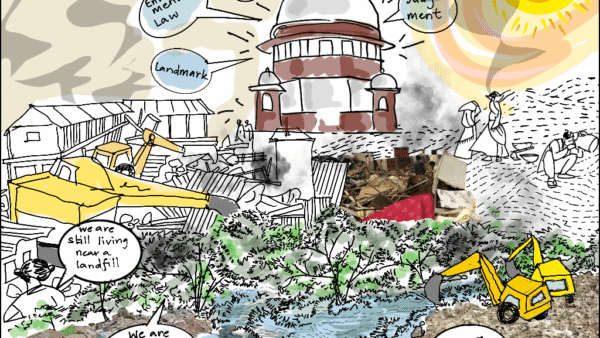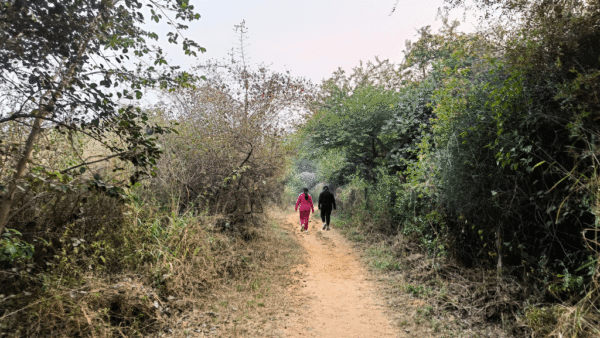The increasing densification in cities has severed people’s connection with nature, especially with accessible green spaces. Besides their own value, these offer a way to combat high heat. Urban green spaces have a high level of thermal comfort, especially in larger parks and forests, which can have up to 0.94 degrees Celsius lower daytime temperatures, according to this study.[1]
The sixth Intergovernmental Panel on Climate Change (IPCC) report[2] also recommends urban greening, restoration of wetlands and upstream forest ecosystems as effective ways to reduce urban heat and flood risks. It states that “green/natural and blue infrastructure supports carbon uptake and storage and either singly or when combined with grey infrastructure can reduce energy use and risk from extreme events such as heat waves, flooding, heavy precipitation and droughts, while generating co-benefits for health, well-being and livelihoods”.
Several parts of India have been through an unbearable summer this year. Cities like Delhi reached a record high[3] at 48 to 52 degrees Celsius while other cities across north and northwestern India sizzled at 45-46 degrees Celsius. The world is currently at 1.1 degrees Celsius of global warming but we have seen a glimpse of a warmer world. Amid red heat alerts and heat action plans, cities around the globe have taken on-ground initiatives to ‘cool’ themselves.
The research[4] paper ‘Urban heat mitigation by green and blue infrastructure: Drivers, effectiveness, and future needs’ established the positive connection between the green spaces and their effect on surrounding temperatures. Here’s the range: botanical gardens allowed temperatures to dip by 3.5 to 5 degrees Celsius, wetlands by 3.2 to 4.9 degrees Celsius, green walls by 4.1 to 4.2 degrees Celsius, street trees by 3.1 to 3.8 degrees Celsius, and vegetated balconies by 2.7 to 3.8 degrees Celsius.
With heat waves increasing[5] every year, more green space also makes for biophilic cities. Biophilia, or “love for living systems”[6], means reconnecting people with nature through nature-based solutions and building in nature. “Green cities”[7], as biophilic cities are also called, incorporate nature through innovative architectural and engineering solutions. Biophilic cities have proven[8] to be sustainable as well as resilient.
From green corridors to shading policies, here are some examples from around the world that Indian cities can take lessons from.
Singapore
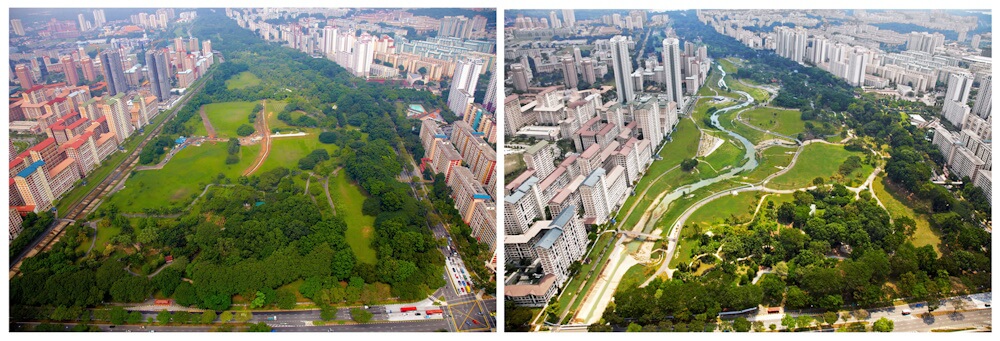
Photo: Wikimedia Commons
With a population of around 6 million[9] and tree population of around 7 million (as of 2020)[10], Singapore has earned its title as the “Garden City”. However, rapid urbanisation meant, according to temperature records[11] between 1948 and 2023, that the mean average temperature of the island increased by an average of 0.25 degrees Celsius per decade. This study[12] predicts a 5 degrees Celsius rise[13] by the end of this century.
The Centre for Climate Research studies have become the basis for practical action plans with nature-based solutions. The National Parks Board also deployed 40 environmental sensors to study the Urban Heat Island effect and support the Cooling Singapore 2.0 project.[14] The Active, Beautiful, Clean Waters (ABC Waters) Program, an initiative of the Public Utilities Board, transformed the country’s water bodies – like the Kallang channel — into 62 hectares of Bishan-Ang Mo Kio Park.
As one of the largest urban parks in Singapore, this park’s renovation[15] included breaking the divide between concrete-fenced 10-kilometre-long Kallang river and the city to restore the river amid surrounding natural areas. This reconfiguration increased the river’s conveyance capacity by approximately 40 percent and increased biodiversity by 30 percent[16] – a model which experts have suggested for Chennai rivers.[17]
Green spaces like this park can be around 1.5 degrees Celsius cooler[18] than its surrounding areas, research found.
Hong Kong
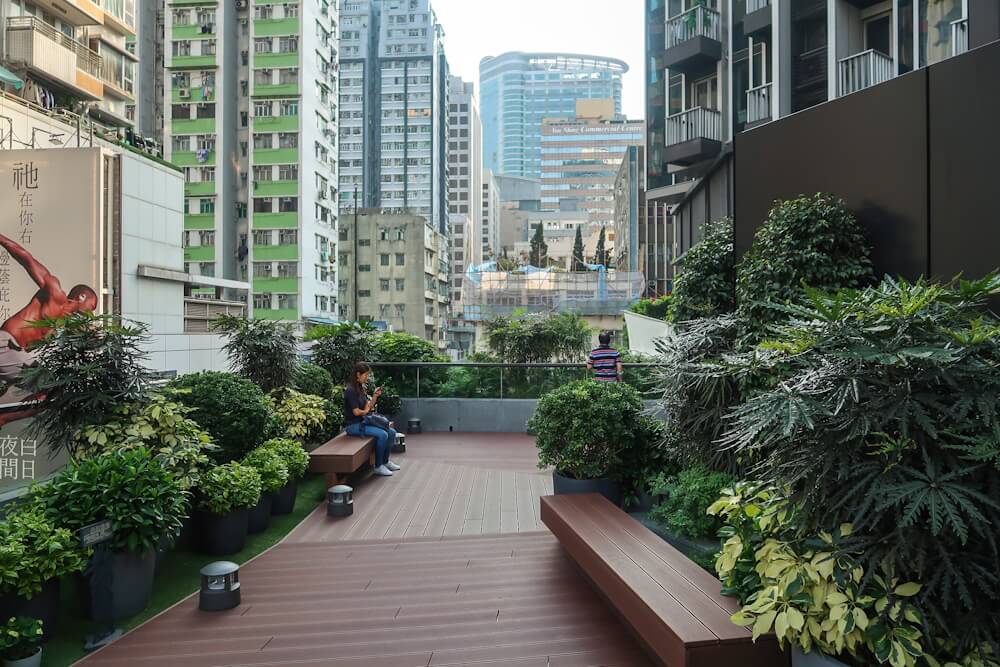
Photo: Wikimedia Commons
Between 1972 and 2020, the constructed area in Hong Kong increased[19] from 118.2 square kilometres to 236.3 square kilometres. With a population of 7.5 million, today, Hong Kong is known for its poor housing conditions[20] and high-density urban areas. As of 2022, it had a built-up area of 61 percent[21] and a green cover area of 16 percent. However, Hong Kong is also attempting to go green through vertical gardens, urban farming[22], energy efficient ventilation and other strategies.
The Forest[23], a shopping arcade beneath a residential building, is an example. Undertaken by the New World Development company and the Urban Renewal Authority, it recycles water as well as has a green façade to reduce the need for air conditioning. Designed to “breathe” through a natural ventilation system, Edwin Chan, senior project director at NWD, states[24] that this is the “first mall in Hong Kong that’s able to run without active air-conditioning”.
Additionally, a 170-metre-long biophilic jogging path was also designed to improve micro-climate as well as promote physical activity. Hong Kong has also redesigned and redeveloped its waterfronts, like the Victoria Dockside[25], to include mixed-used activities with outdoor public spaces and gardens.
Medellin
The Colombian city invested in establishing 30 green corridors (Corredores Verdes), drastically bringing down its temperatures over the last three years. Medellin’s green corridor programme was launched in 2016 in response to its rising temperatures and worsening air quality, aiming to provide a 20-kilometre interconnected “network of shade by transforming 18 roads and 12 waterways into a green space”.[26] Between 2016 and 2019, the average temperature of Medellin dropped by 2 degrees Celsius[27] – and is expected to further decrease by 4-5 degrees Celsius.
This $16.3 million project also roped in citizens of the city, training them as gardeners and technicians to maintain these green areas. By intervening in the busiest areas for greater impact and making use of Colombia’s municipal Participatory Budget which invests in citizen projects, a bioclimatic study estimated that vegetation in one corridor has the capacity to absorb 1,60,787 of carbon dioxide[28] per year. The total green area in Medellin is now around 43 million square feet (4 million square metres).[29]
Medellin is Colombia’s second largest city, after Bogota, which is also a pioneer in sustainable mobility initiatives and has plans[30] to implement green projects as well.
Dar es-Salaam, Tanzania
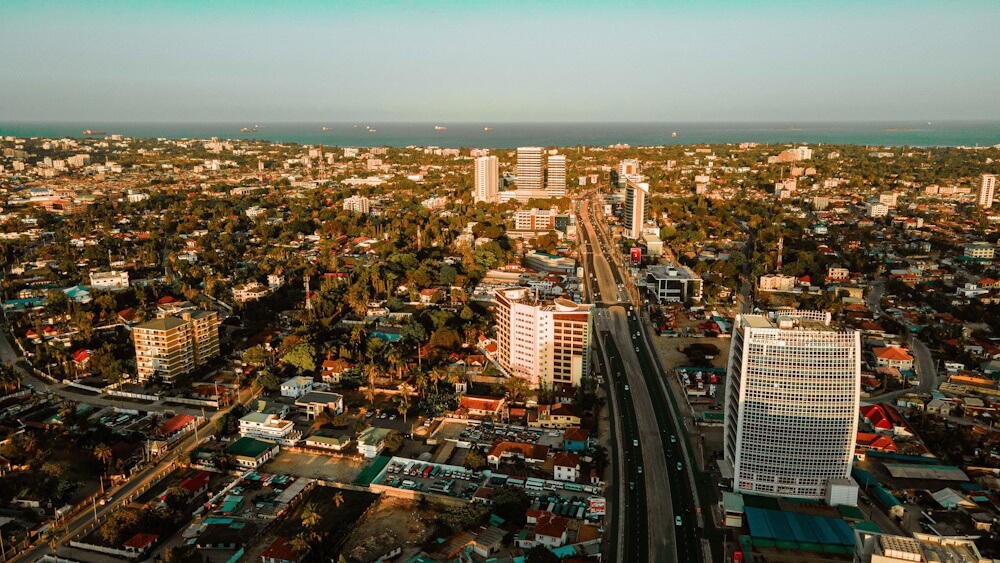
Photo: Wikimedia Commons
Between 2001 and 2023, Tanzania lost 3.25 mega hectares[31] of tree cover – equivalent to 1.13 gigatonnes of carbon dioxide emissions. Dar es-Salaam, Tanzania’s largest city of about 8.1 million people[32], lost 36 percent[33] of its tree cover to urbanisation. The coastal city is vulnerable to[34] floods and sea level rise, while its residents, 75 percent of whom live in unplanned settlements, are prone to high heat stress.[35] Rapid growth of settlements also means disappearing green spaces, but their initiative to use artificial intelligence for tree mapping might be a solution going forward.
As part of Resilience Academy, in a pilot programme funded by the Global Facility for Disaster Reduction and Recovery (GFDRR), participants helped collate[36] a comprehensive map of the city’s trees. Poorer informal neighbourhoods here tend to have less green cover[37] around them, thus enduring extreme weather events with limited resources and support.
This process of data labelling has led the participants to document grid-wise data of the types of trees, canopies, buildings and shade conditions on Dar es-Salaam’s map.[38] Findings included the fact that the city’s prosperous neighbourhoods had almost 20 percent tree cover while its poorer neighbourhoods had only around 0.5 percent. The GFDRR team is now working with the European Space Agency to expand its mapping, and subsequently strategise to build resilience against[39] flood and heat.
Paris
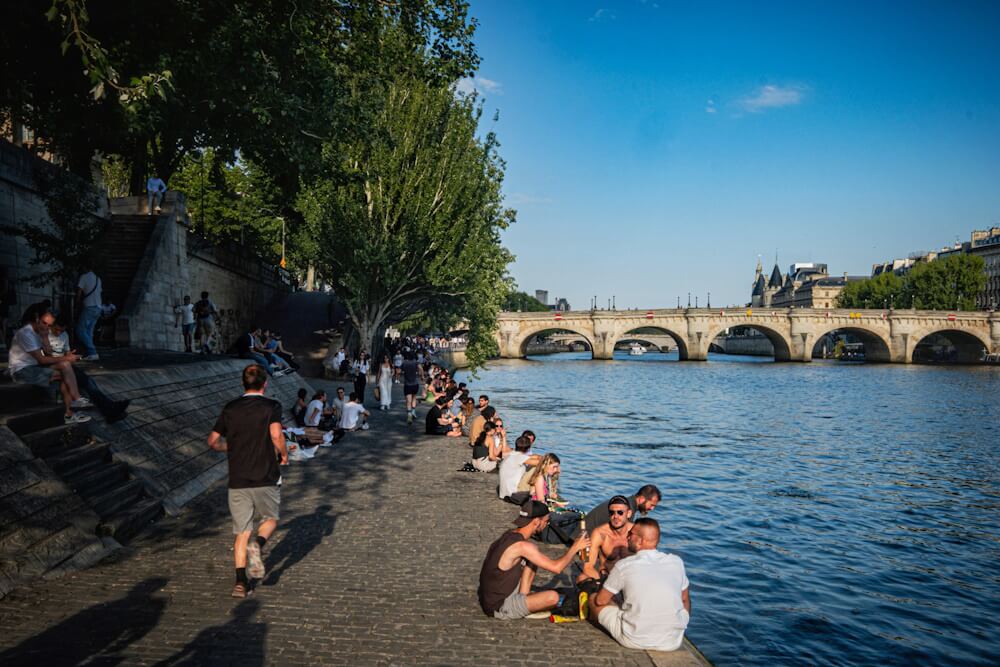
Photo: Mark Barrot/Flickr
In 2023, France recorded over 5,000 deaths[40] during four heat waves in summer putting Parisians at the highest risk of dying from heat waves across Europe. This is often attributed[41] to the Urban Heat Island effect, density of the city, limited access to green spaces and shade, and exacerbated threats to vulnerable communities. Urban heat – increased by the city’s grey zinc rooftops, tarmac on roads and pollution from vehicles – compelled the authorities to formulate a heatwave action plan[42] and adopt measures to reduce heat stress.
More than 800 spaces in Paris form a network of ‘cool islands’[43] that are maintained at 26 degrees Celsius. These include parks, forests, swimming pools and museums, connected by walkways that are planned to cool a person using them within seven minutes. An app was also developed to guide users to these islands and give feedback for improvement. Additionally, 1,200 drinking water fountains were installed to improve access to water and reduce the use of plastic bottles.
Pop-up beaches called Paris Plages[44] are created along the River Seine during summer months, facilitating access to safe cooling environments as well.
Wuhan, China
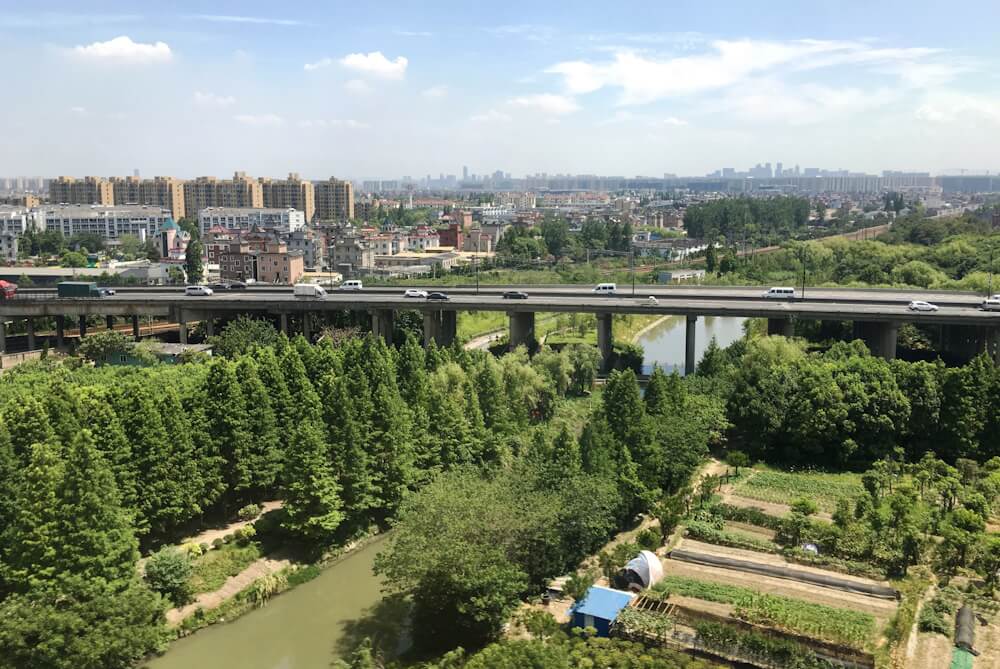
Photo: Wikimedia Commons
Wuhan, like many cities across the globe with rapid urbanisation, faces problems with waterlogging. Rainwater did not seep through impervious concrete surfaces. The solution was the Sponge City Program in 2013, a concept that treats urban construction like a sponge to percolate and store rainwater, through an interconnected system of blue-green spaces and permeable construction material like porous bricks.
Wuhan was one of the first pilot cities to bring in these changes, creating “comprehensive water management structures, green infrastructure, an upgraded drainage system, water storage and purification facilities throughout the city”.[45] The implementation of a ‘green corridor’ as part of its sponge city initiative has led to temperature reductions. According to this study[46], the shape and type of green space reduced average temperature by 1.32 degrees Celsius. This green corridor, which includes extensive parks, wetlands, and vegetated areas, is designed to also manage stormwater and reduce flooding.
The difference in temperatures between impermeable and permeable pavements can reach up to 15.8 degrees Celsius[47] which too this programme aims to address. It improves the microclimate by increasing shade and evapotranspiration, thus mitigating the Urban Heat Island effect. China’s national government dedicated CNY 20.7 billion (US $3 billion)[48] for 16 sponge cities between 2015 and 2017 and initiated sponge city projects in Wuhan covering 38.5 square kilometres.
Jackson, Mississippi, USA
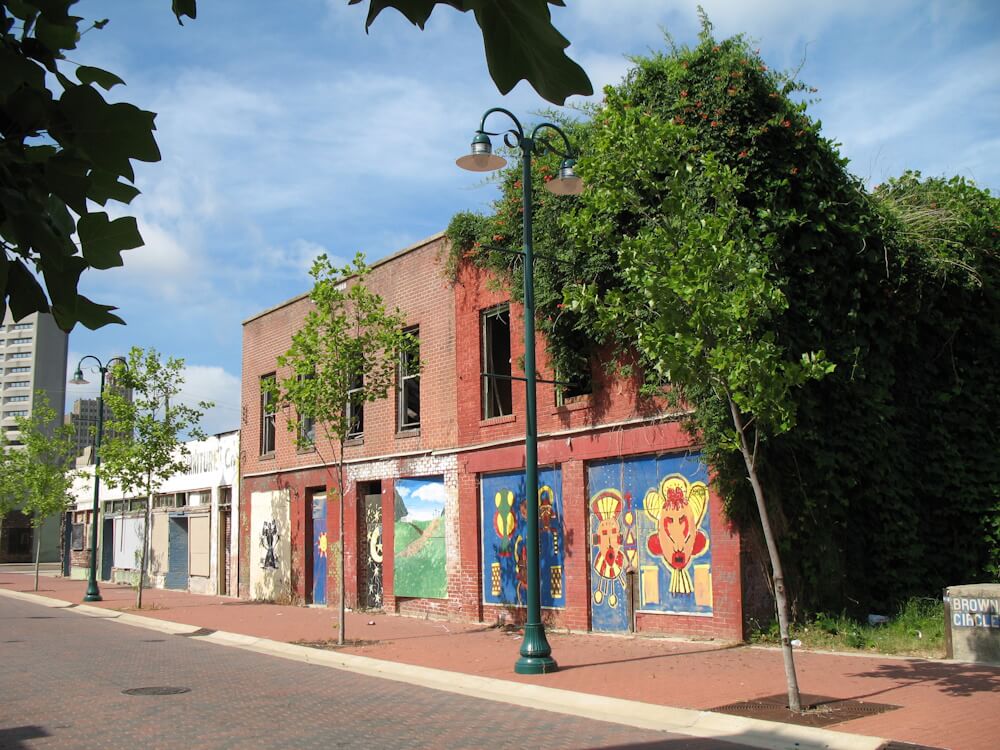
Photo: Wikipedia
Community-led initiatives with the support of 2C Mississippi, Jackson Community Design Center, and the National League of Cities are undertaking the task of making Jackson cooler. Temperatures here are reportedly 35 degrees Celsius for approximately 47 days of the year and this is set to go up to 58 days a year by 2030.[49]
Through this group effort, three locations in Jackson’s Farish Street district were identified for the Jackson Greening Project to be transformed into green spaces to reduce ambient temperatures, and improve people’s health and wellbeing. Over 70,000 individual measurements[50] of temperature and humidity were recorded throughout the day to create heat maps. This data set confirmed a well-known pattern – “developed areas with high amounts of concrete and buildings were found to have higher average temperatures (up to 90°F) compared to vegetated and natural areas (87°F)”.[51]
This project, with the help of its community and partner organisations, developed design mock-ups for a community park with nature-based solutions like green walls, rain gardens and shrubs. Farish Street’s transformation is set to begin this year.
Seville, Spain
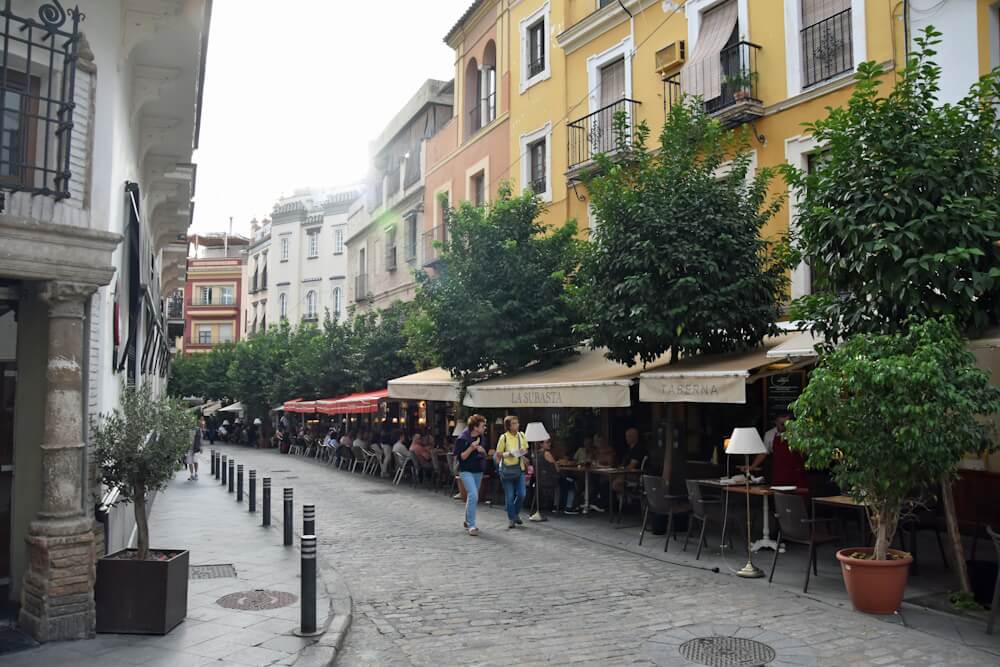
Photo: Wikimedia Commons
The picturesque city of Seville, Spain, has a new policy to tackle heat – a policy of shade. Summer temperatures in this city can reach up to 40 degrees Celsius[52], making heatwaves[53] a dangerous possibility. The Spanish tradition of charla al fresco (“cool chat”) includes spending evenings sitting outside and chatting with neighbours. However, Seville’s heat makes it difficult to do so; some festivals even start at 10pm to avoid the scorching sun.[54]
Seville’s policy of shade brings back large awnings that were reportedly seen in photos from back in the 1940s. Taxi stops, public playgrounds, schools and hospitals have been intervened upon by Cartuja Qanat[55] – the urban transformation project to encourage using the street to boost the city’s social ecosystem. To tackle the effects of climate change, this project[56] aims to install vertical wet barriers, drain permeable pavements, cool semi-transparent roofs, and plant 5,000 trees a year.
Engineers have replicated ancient Persian technology of qanats which originally used fossil fuels but helped lower the street’s temperature by 3 degrees Celsius[57] – they have now developed a renewable source of energy to use for the same.
Shivani Dave is an architect, writer and illustrator interested in exploring the intersection of architecture and social sciences. After graduating in architecture from Mumbai, and in media from the London School of Journalism, she is applying the fundamentals of architectural research and writing within urban contexts to develop phenomenological ideas about life in cities. She researches, writes and illustrates in Question of Cities.
Cover photo: A green corridor in Medellin in Colombia; Credit: Wikimedia Commons

